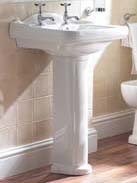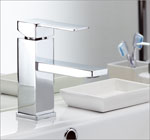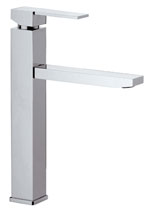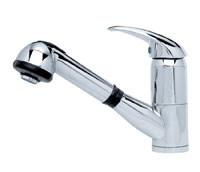
Many people walk into our shop and have no idea what ‘tap’ should go where, never mind what they are called. For instance, there are pillar taps, bar taps, sink mixers, basin mixers, bath mixers and concealed mixers..huh? No wonder we are confused. I think the Americans have it right, they call em all faucets, no matter where you put it. We apparently need to make things a little more difficult, maybe that is the British way. Ok, I’ll start with the most common and most used taps and then move towards the obscured types. The best way to explain all these different taps are through their application or use.
Taps for basins

If you have not played many computer games in your life you will remember there are two taps on a basin, one left and one right (hot and cold). These two little taps are called pillar taps. You get cheap ones and stylish expensive ones, but generally they are an affordable option. I have seen pillar taps being used for filling a bath which is not a good idea because they are not designed for high water flow rates. It will take quite a while to fill a bath with basin pillar taps. There is one more version of the pillar tap which comes directly out of the wall, somehow people in the plumbing business had meeting late Friday afternoon to decide what to call it. They came up with a name that has absolutely nothing to do with plumbing what so ever, it’s called a ‘bib tap’. It is such a preposterous remotely associated name that I always remember it 🙂 The modern version of a pillar tap (remember time moves on and there is something like technology) is the ‘mixer’ or basin mixer. It is called a mixer because it has a cartridge inside which mixes
the hot and cold water together via a lever (not a handle). They are often referred to as single lever (SL) basin mixers. The basic SL basin mixers are installed on top of a, guess what, one tap hole ( 1TH) basin. With hot and cold pillar taps one would use a 2TH basin (that is a two tap hole basin, its good to talk the talk when browsing in a plumbing shop). What if your basin does not have tap holes and it is called (or the sales man called it) a free standing basin.

Well then you need a raised basin mixer which is installed into the vanity top (usually granite). It can stand anywhere you like as long as the water falls into the basin :). The disadvantage of the raised basin mixers is that they are more expensive and quite often the free standing as well, but can look absolutely stunning. So you don’t like any of these new mixers. Your other option is to use an undertile stop tap and combining it with a spout. So, two taps are installed in the wall or vanity surface with the spout also coming out of the wall or out of the vanity surface. Undertile stop taps are also used in showers and are always used to control the water to your washing machine and dish washer in the kitchen. Needles to say they are the cheaper versions since they are installed under the kitchen counter and are hardly used or seen. What I like about some undertile stop taps is that they have a quarter turn option. This means that you don’t have to rotate the tap handle three million times to get a decent flush of water, just turn it 90° and it is fully open, cool (The decision to provide that option was held during a Monday morning meeting, by the way). One important point to consider with raised basin mixers and wall installed systems, the height where the water is released is usually higher than with normal basin mixers or pillar taps. So if you combine these mixers with shallow basins you will find that they ‘splash’ more, or put it in another way, ‘splashing’ is more prominent with these higher taps than other. The only way to prevent splashing is to buy taps with good aerators at the end of the spout. It is also an important factor when choosing a kitchen mixer/tap. But that is a point for another blog later on.

An important point on basin mixers and bath mixers. There is no law to prevent you from using a basin mixer or pillar tap or undertile tap for your bath. But the law of physics will haunt you later on if you do. All basin mixers have an inlet diameter of 15mm (1/2″), bath mixers or bath taps have an inlet of 20mm (3/4″). So their pipes are thicker so more water will flow through per unit of time, put it simply, your bath will fill up more quickly (with 15mm taps it will only be full tomorrow). The volume of water flowing out of a basin mixer is much less than the volume of water flowing out of a bath mixer. Undertile stop taps come in 15mm and 20mm, so they can be used for basins and baths. If you would like a pillar tap for your bath, make sure you order a 20mm type.
There is one basin mixer that is worth mentioning seperately, it is a bit of a mutation really. I think it got lost between the basins and showers. It has various names, but mostly it is referred to as a ‘shampoo mixer’ or ‘hand shower mixer’. It has a pull-out hand spray instead of a fixed spout and is mostly used in salons.



1 Comment
thanks for the article, although i’m new to this line, it is informative